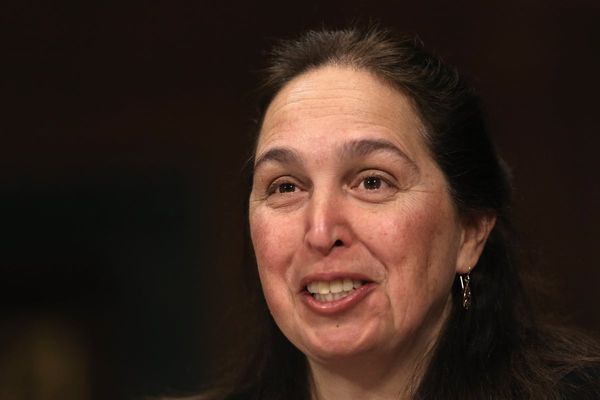
Pressure is mounting on the federal government to prevent ballooning course costs as figures reveal some humanities courses have become more than 140% more expensive in the past five years.
The costs are a hangover from the previous federal government’s controversial job ready graduates (JRG) scheme, which brought wide condemnation from the sector.
How much will courses cost from 2024?
Students will be hit with an average increase in costs of 7.8% from next year as decades-high indexation on loans comes into effect. But the burden doesn’t fall equally.
Data released by the Department of Education earlier this month shows fees for law, accounting, administration, economics, commerce, communications and society and culture degrees will jump to $16,323 a year from 2024.
It’s a $1,181 increase compared with 2023, and a $9,639 increase for society and culture courses since five years ago.
In 2021, reforms were introduced by the Coalition that changed the cost of degrees and moved society and culture courses to the same band as law and business.
As a result, some humanities courses will have increased by 144.2% in 2024, while there has been a 46.3% increase for law, accounting, commerce, economics and administration.
Contrastingly, education and nursing students are paying 32% less than five years ago ($4,445 compared with $6,566) as a result of greater commonwealth contributions.
Agriculture students are paying 53% less ($4,445 compared with $9,359), while medicine, dentistry and veterinary science degrees have faced increases of 16% ($12,720 compared with $10,958).
Why are some degrees getting more expensive?
Changes to the prices of courses are a result of reforms announced by the Coalition in the first year of Covid-19, designed to incentivise students to study certain degrees, including science and engineering.
The JRG scheme reduced the overall government contribution to degrees from 58% to 52% and increased fees for some courses, including humanities, to fund fee cuts in other courses and 39,000 extra university places.
But data shows student contributions towards science degrees have only decreased marginally in the past five years (-4%), and commonwealth funding has not kept pace.
The chief executive of Universities Australia, Catriona Jackson, says the JRG scheme cut the average level of Commonwealth funding for student places while shifting the additional burden on to students and universities.
“We have been very clear that JRG goes against the national interest and needs to be replaced as soon as possible with a system that is fairer for students and supports universities to educate the next generation,” she says.
Will the job ready graduates scheme be scrapped?
The Australian universities accord has been scathing of the scheme in its interim report.
The education minister, Jason Clare, says the architect of the higher education loan program (Help), Prof Bruce Chapman, was assisting the accord team with looking at the issue of affordability.
“Their interim report makes it clear that the previous government’s JRG scheme hasn’t worked, and it ‘needs to be redesigned before it causes long-term and entrenched damage to Australian higher education’,” he says.
“The accord team is working on how to fix this and what other changes might need to be made, including the most appropriate way to reduce the volatility of the current indexation method.”
The team is due to hand down its final report in December. Luke Sheehy, the executive director of the Australian Technology Network of Universities (ATN), says changes need to come sooner.
He says the body has always had concerns with JRG, citing inadequate commonwealth funding rates and the ineffectiveness of price incentives to drive students to courses.
“While we hope the accord will result in a complete overhaul of the funding arrangements starting in 2025, we also know that every year is crucial to a strong pipeline of students,” he says.
“Beginning in 2024, the full impact of the JRG reforms will be felt as transition funding ceases … we have a duty to the students studying now, and a responsibility to address this issue as soon as possible.”
The chief executive of the Group of Eight universities, Vicki Thomson, agrees. She says the scheme has been an “abject failure” that must be addressed as a “matter of urgency”.
“It has failed universities, students and research … In 2024, universities will receive less for teaching engineering and science than they did in 2019,” she says.
“When the indexed funding rates come into effect next year the Albanese government will already be halfway through its first term. We can’t afford to go slow on this and put JRG reform off any longer.”
Is pricing influencing students?
Changes to course costs have made minimal difference to the degrees students are choosing to study. Research has found course preferences still depend on student interests, and that for financially motivated students, job and salary prospects have a greater impact than course costs.
Perversely, the changes have actually incentivised universities to enrol more students in humanities degrees in order to subsidise the costs of science and Stem courses, which are more expensive to run. Ten universities – including UNSW, the University of Western Australia, the University of Queensland and Western Sydney University – have dropped minimum entry Atar requirements for arts degrees since the JRG was introduced in 2021.
Sheehy says the way places are funded means for every $1m of fixed commonwealth funding, ATN universities can enrol 59 engineering and science students, or 872 students studying society and culture.
Commonwealth funding is capped, meaning at a certain threshold the university is losing money if it boosts enrolments in courses that are cheaper for students but more expensive for universities to run.
“The system puts meeting student and national demand for engineering and science skills at odds with offering opportunities for more students,” Sheehy says.
“It reduced overall funding to teach engineering and science by around 16% or $4,800 per student place … Funding shortfalls in those courses are hard to absorb and have a significant impact on other priorities.”







